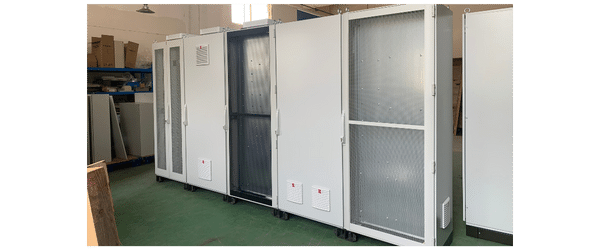Addressing Common Misconceptions About Electrical Fiberglass Boxes
6/12/20243 min read


Understanding Electrical Fiberglass Boxes
Electrical fiberglass boxes are essential components in various electrical applications, serving as protective enclosures for wiring and electrical connections. These boxes are primarily made from fiberglass, a composite material consisting of fine glass fibers embedded within a resin matrix. This unique composition bestows electrical fiberglass boxes with a range of advantageous properties that make them preferable over traditional materials like metal or plastic.
One of the key benefits of fiberglass is its corrosion resistance. Unlike metal boxes, which can rust and degrade over time when exposed to moisture or harsh environmental conditions, fiberglass remains unaffected. This property makes electrical fiberglass boxes an excellent choice for outdoor or damp locations where durability is a concern. Additionally, fiberglass is inherently lightweight, which simplifies installation and reduces transportation costs compared to heavier metal alternatives.
Durability is another significant advantage offered by fiberglass. Electrical fiberglass boxes exhibit high tensile strength and impact resistance, making them robust enough to withstand mechanical stresses without cracking or breaking. This durability ensures long-term protection for electrical components, enhancing the safety and reliability of electrical systems.
Electrical fiberglass boxes find applications across a broad spectrum of settings. In residential environments, they are used to house electrical connections for outdoor lighting, swimming pools, and other exterior installations. In commercial and industrial contexts, these boxes are employed in areas requiring robust, corrosion-resistant enclosures, such as manufacturing plants, chemical processing facilities, and coastal installations. Their versatility and resilience make them a suitable choice for both indoor and outdoor applications, ensuring consistent performance in diverse operating conditions.
Overall, understanding the fundamental properties and benefits of electrical fiberglass boxes is crucial for appreciating their role in modern electrical installations. Their corrosion resistance, lightweight nature, and exceptional durability underscore why they are increasingly favored over traditional materials, providing a reliable solution for safeguarding electrical connections in varied environments.
Debunking Common Myths About Electrical Fiberglass Boxes
There are several misconceptions surrounding electrical fiberglass boxes that often lead to confusion and hesitation among users. One prevalent myth is the belief that fiberglass boxes are not as strong as their metal counterparts. In reality, fiberglass boxes offer comparable, if not superior, strength. Modern manufacturing techniques have significantly enhanced the durability of fiberglass materials, making them highly resistant to impacts and stresses. Expert studies and real-world applications have shown that fiberglass boxes can withstand harsh conditions without compromising structural integrity.
Another common concern is the susceptibility of fiberglass boxes to UV and weather damage. Contrary to this belief, fiberglass electrical boxes are designed to endure various environmental conditions. Advanced UV-resistant coatings and weatherproof formulations ensure that these boxes remain durable and functional even under prolonged exposure to sunlight and adverse weather. Comparative analyses reveal that, when properly maintained, fiberglass boxes exhibit longevity and reliability similar to, or better than, metal boxes in outdoor settings.
Misunderstandings about the cost and complexity of installation also persist. While some assume that fiberglass boxes are more expensive and harder to install, this is not necessarily the case. The initial cost of fiberglass boxes can be offset by their longevity and low maintenance requirements. Moreover, their lightweight nature simplifies the installation process, requiring less labor and reducing the overall installation time. Industry professionals often favor fiberglass boxes for their ease of handling and efficiency in various applications.
Real-world examples further highlight the advantages of fiberglass electrical boxes. For instance, in coastal regions where corrosion is a significant concern, fiberglass boxes have proven to be a reliable alternative to metal boxes, which can deteriorate quickly in salty environments. Expert opinions consistently support the use of fiberglass boxes for their combined benefits of strength, durability, and cost-effectiveness.
Benefits and Best Practices for Using Electrical Fiberglass Boxes
Electrical fiberglass boxes offer numerous benefits that make them an excellent choice for a variety of applications. One of the most significant advantages is their long-term cost savings. Unlike traditional metal boxes, fiberglass boxes are highly resistant to corrosion, ensuring durability and reducing the need for frequent replacements. This longevity translates to lower maintenance costs and fewer disruptions in the long run.
In terms of safety, electrical fiberglass boxes provide excellent insulation properties, reducing the risk of electrical shocks. They are also non-conductive, which helps in preventing short circuits and other electrical hazards. Additionally, fiberglass boxes are resistant to extreme temperatures and harsh environmental conditions, making them suitable for both indoor and outdoor installations.
Environmental benefits also play a crucial role in the appeal of electrical fiberglass boxes. Being lightweight, they reduce transportation emissions, contributing to a lower carbon footprint. Furthermore, fiberglass is a recyclable material, aligning with sustainable practices and environmental regulations.
To ensure optimal performance, it is vital to follow best practices for installation and maintenance. Proper sealing techniques are essential to protect the contents of the box from moisture and dust. Using weatherproof gaskets can enhance the sealing, especially in outdoor environments. Selecting the appropriate environment for installation is also crucial; while fiberglass boxes are versatile, they should be installed in areas that do not exceed their temperature and mechanical stress limits.
Regular maintenance checks are necessary to ensure the continued functionality of electrical fiberglass boxes. Inspecting for cracks, ensuring proper sealing, and verifying the integrity of the mounting are key aspects of maintenance. By adhering to these best practices, one can maximize the benefits and lifespan of electrical fiberglass boxes, ensuring they remain a reliable component in any electrical system.
